Affiliate links on Android Authority may earn us a commission. Learn more.
Google Pixel 7 Pro vs Samsung Galaxy S22 Plus: Which one should you buy?
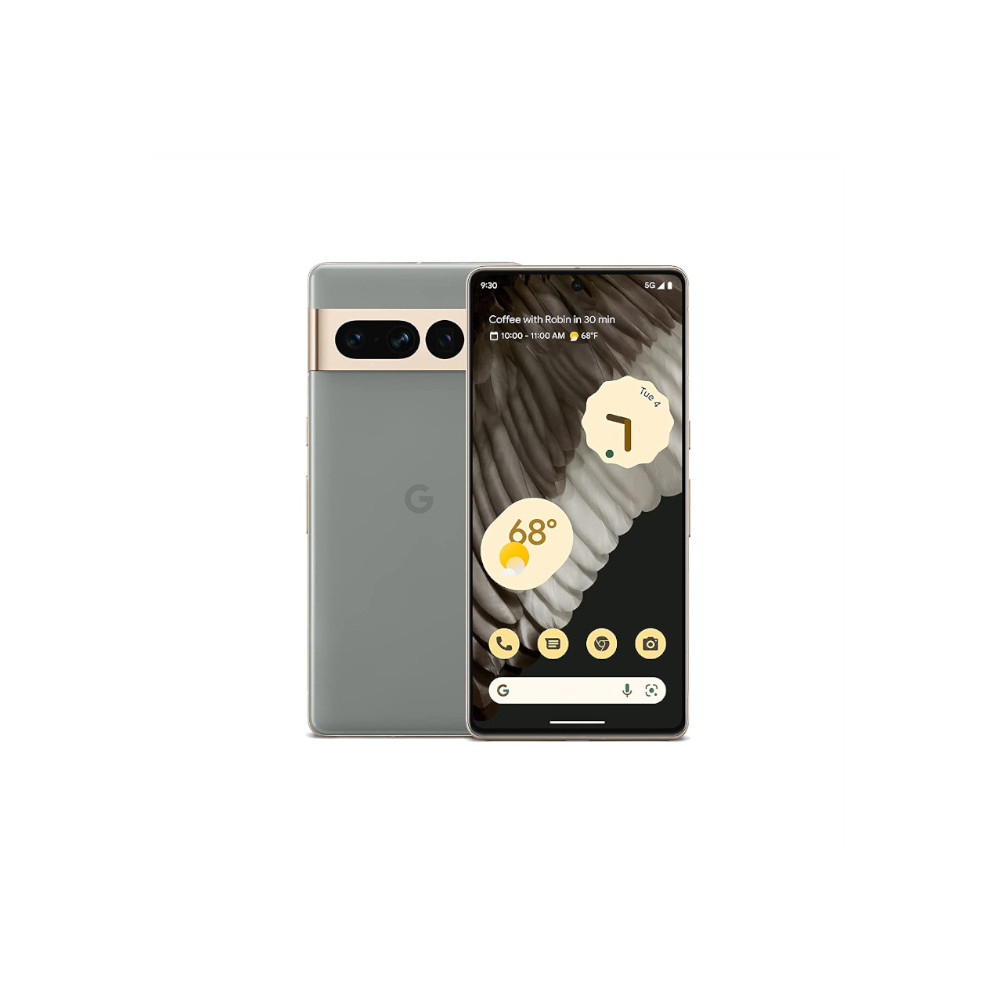
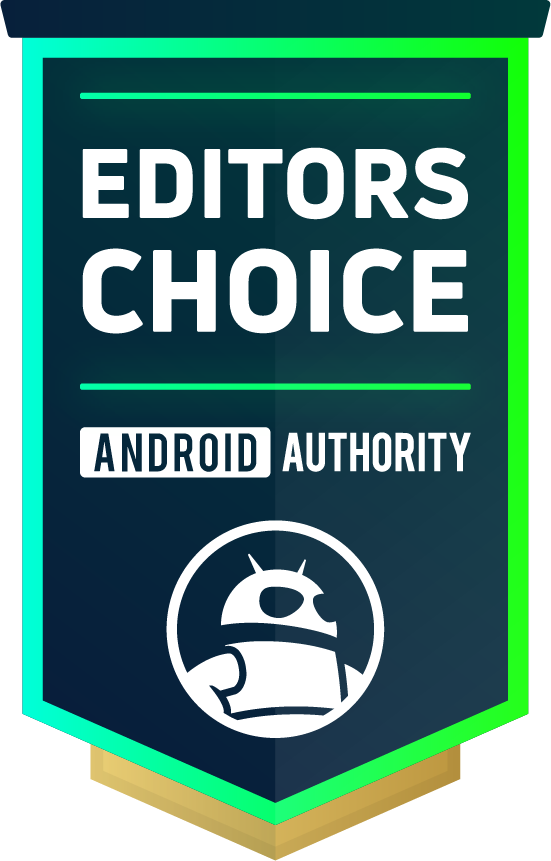


With the Pixel 7 Pro, Google refined a tried-and-tested design with updated internals and a few new software tricks. But how does it stack up against an older but still excellent flagship, like the Galaxy S22 Plus? It’s a close race, so we pit the Google Pixel 7 Pro vs Samsung Galaxy S22 Plus to determine if you should settle for the old or jump for the new.
Editor’s note: Samsung has released the Galaxy S24 series since the original publication of this article. The Plus model features a larger battery and a slightly tweaked design compared to last year.
Google Pixel 7 Pro vs Samsung Galaxy S22 Plus: Design, durability, and display
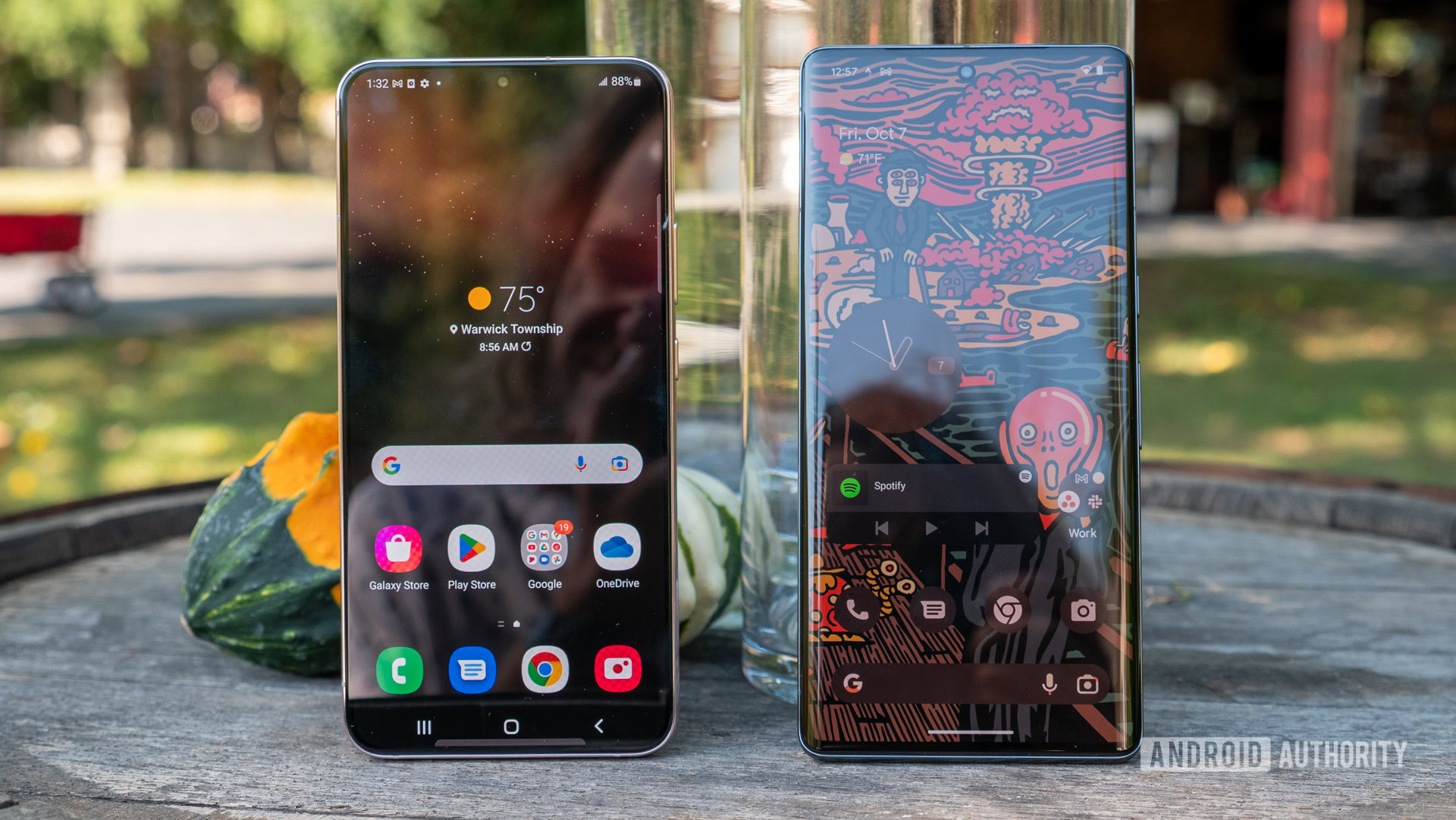
The Pixel 7 Pro and Galaxy S22 Plus look much like their predecessors, but that’s not a bad thing. Their designs are still among the best you’ll find in the smartphone market and don’t look dated.
Comparing the two phones, the S22 Plus ekes out a small lead in terms of durability with Gorilla Glass Victus Plus protection on the front and back. Google, meanwhile, has opted for the slightly older (but still competent) Gorilla Glass Victus on the Pixel 7 Pro. Both phones feature IP68 ratings and stereo speakers but lack a headphone jack.
Even though the general silhouettes of both phones remain largely unchanged from last year, the S22 Plus and Pixel 7 Pro boast brand-new colorways. This time around, however, Google has done away with the iconic dual-tone colorway. Instead, we get a metallic strip in a silver or gold finish that runs the length of the horizontal camera bar. Moreover, the Pixel’s limited color variety may steer you towards the Galaxy S22 Plus and its eight color options, but more on that later.
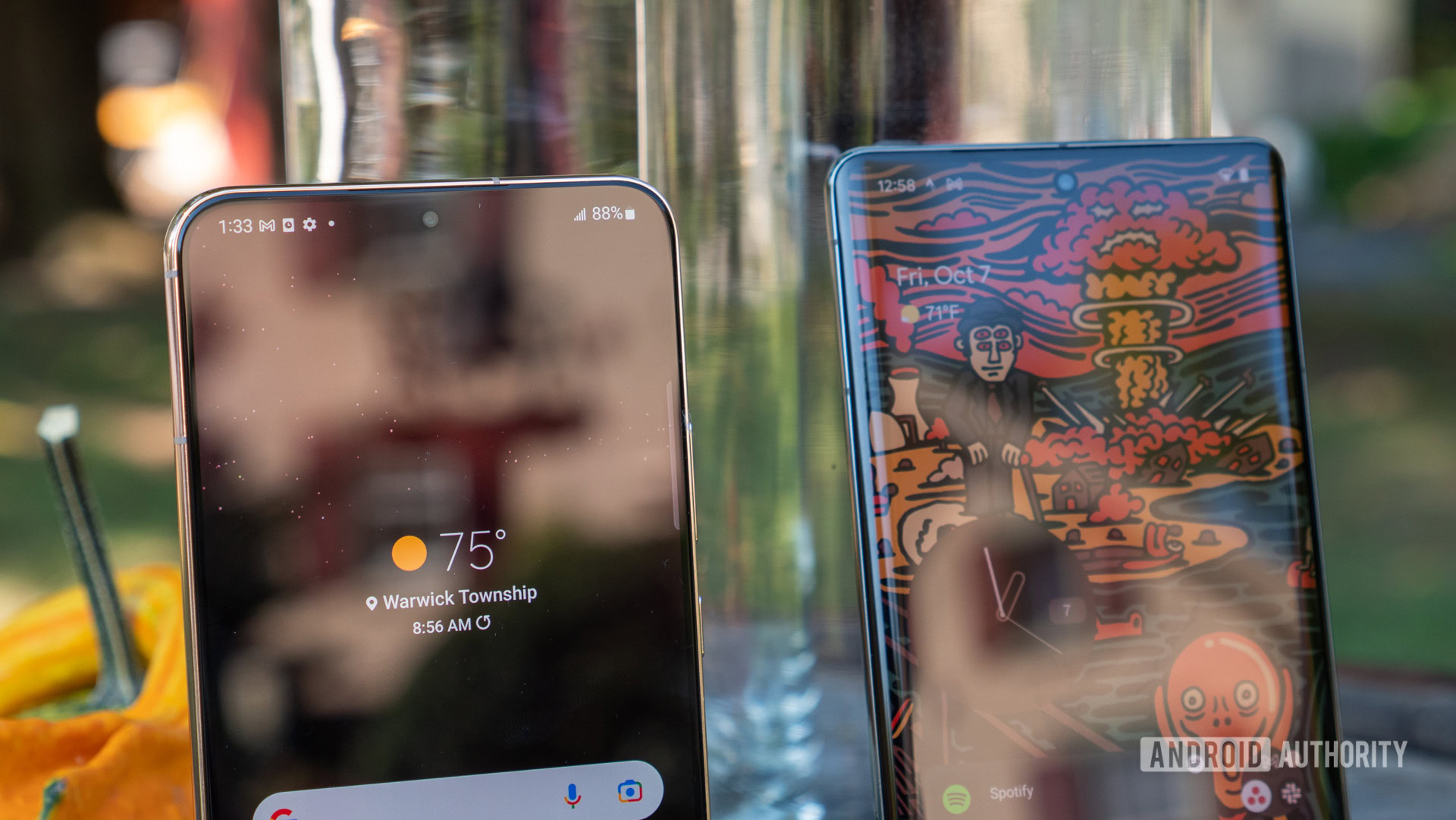
Both smartphones pack AMOLED panels on the display front with a refresh rate of up to 120Hz. However, not everything is equal. The Pixel 7 Pro is the only one that gets a higher-resolution Quad HD display, while Samsung has reserved that for the S22 Ultra. The Pixel 7 Pro also features LTPO display technology, meaning it can dial down the refresh rate to conserve battery. However, you may notice the S22 Plus gets brighter as Samsung has bumped the brightness to 1,750 nits this generation.
We don’t have exact brightness numbers for the Pixel 7 series yet, but Google claims a 25% improvement over last year’s measured 800 to 1,000 nits figure. That’s good enough for HDR playback but not ideal if you’re trying to read outdoors on a sunny day.
The Galaxy S22 Plus has the brighter display, but the difference is subtle at best.
Going from the base Galaxy S22 to the S22 Plus, it’s hard to miss the 0.5-inch display size difference between the two smartphones. This naturally translates to a larger overall volume but is still smaller than the Pixel 7 Pro and its 6.7-inch display. Moreover, the S22 Plus’ slimmer bezels help it feel smaller in the hand than the screen size suggests.
There’s also a subtle difference between their aspect ratios — the 19.5:9 aspect ratio on the S22 Plus is ever so slightly wider than the Pixel’s taller 20:9 display. There’s also a sizable weight difference between the two smartphones. The Pixel 7 Pro weighs 212g, nearly 10% more than the Galaxy S22 Plus’ 195g.
Google Pixel 7 Pro vs Samsung Galaxy S22 Plus: Performance, battery, and charging
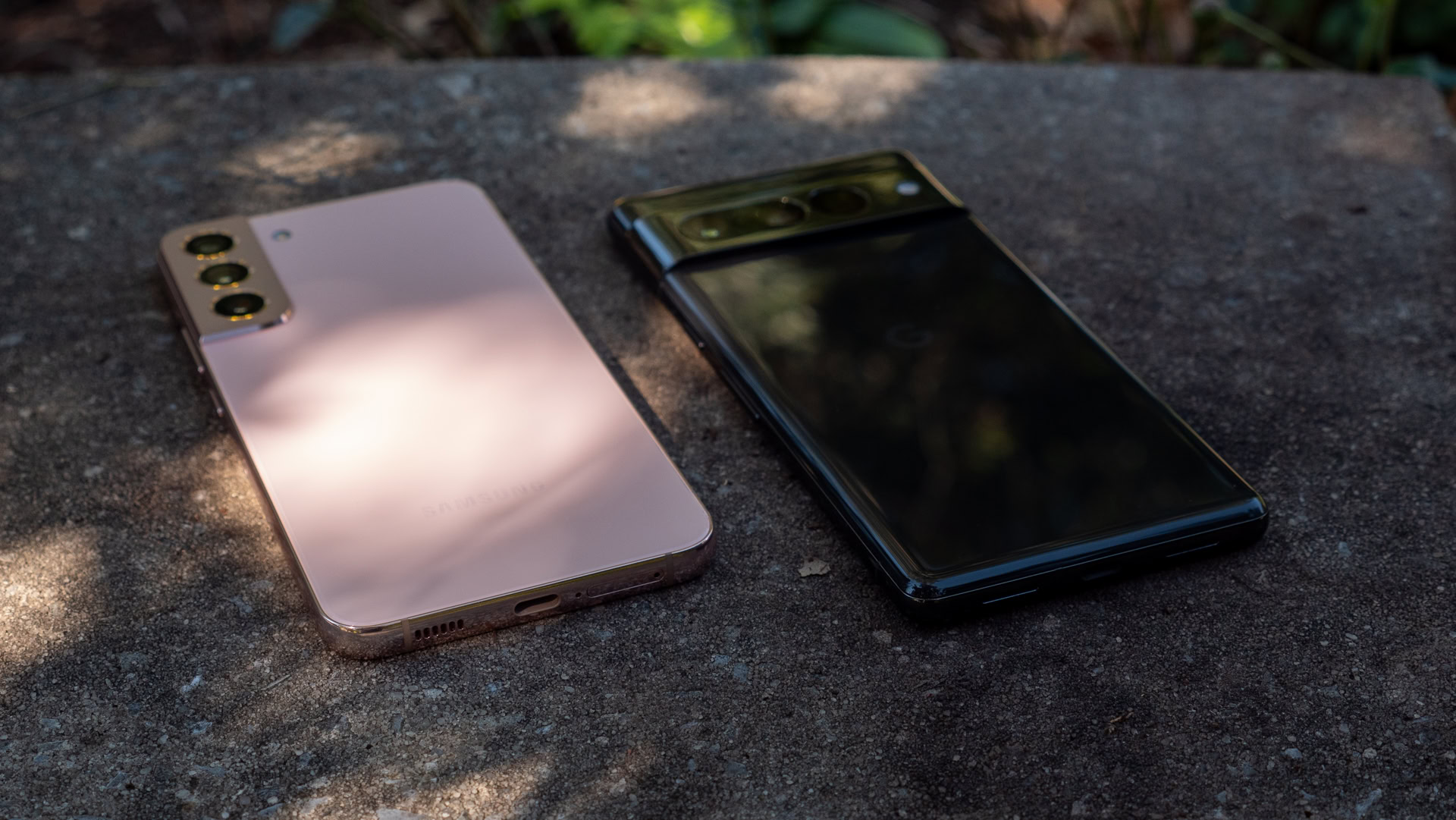
In terms of raw compute power, Google and Samsung have taken somewhat opposing angles to under-the-hood hardware changes this generation.
As we’ve come to expect from Samsung every year for the past decade, the Galaxy S22 Plus includes 2022’s Snapdragon 8 Gen 1 or Exynos 2200 chipset, depending on the region. Meanwhile, the Tensor G2 in the Pixel 7 Pro only offers incremental improvements over the original Tensor SoC. Google claimed a 20% better efficiency result, but our review concluded that the Pixel 7 Pro runs warm under pressure and scores below other 2022 flagship chips.
Google's in-house Tensor G2 chip continues to prioritize AI performance over raw compute horsepower.
Having said that, Google’s primary priority is the Tensor Processing Unit (TPU), which has significantly improved this generation. The TPU handles AI-based workloads like real-time dictation and translation and is responsible for the Pixel’s signature computational photography features like Face Unblur. If those features are important to you, the Tensor G2 may offer tangible benefits over the S22’s choice of chips. Having said that, Samsung may roll out Galaxy AI features to older smartphones including the S22 family with future software updates.
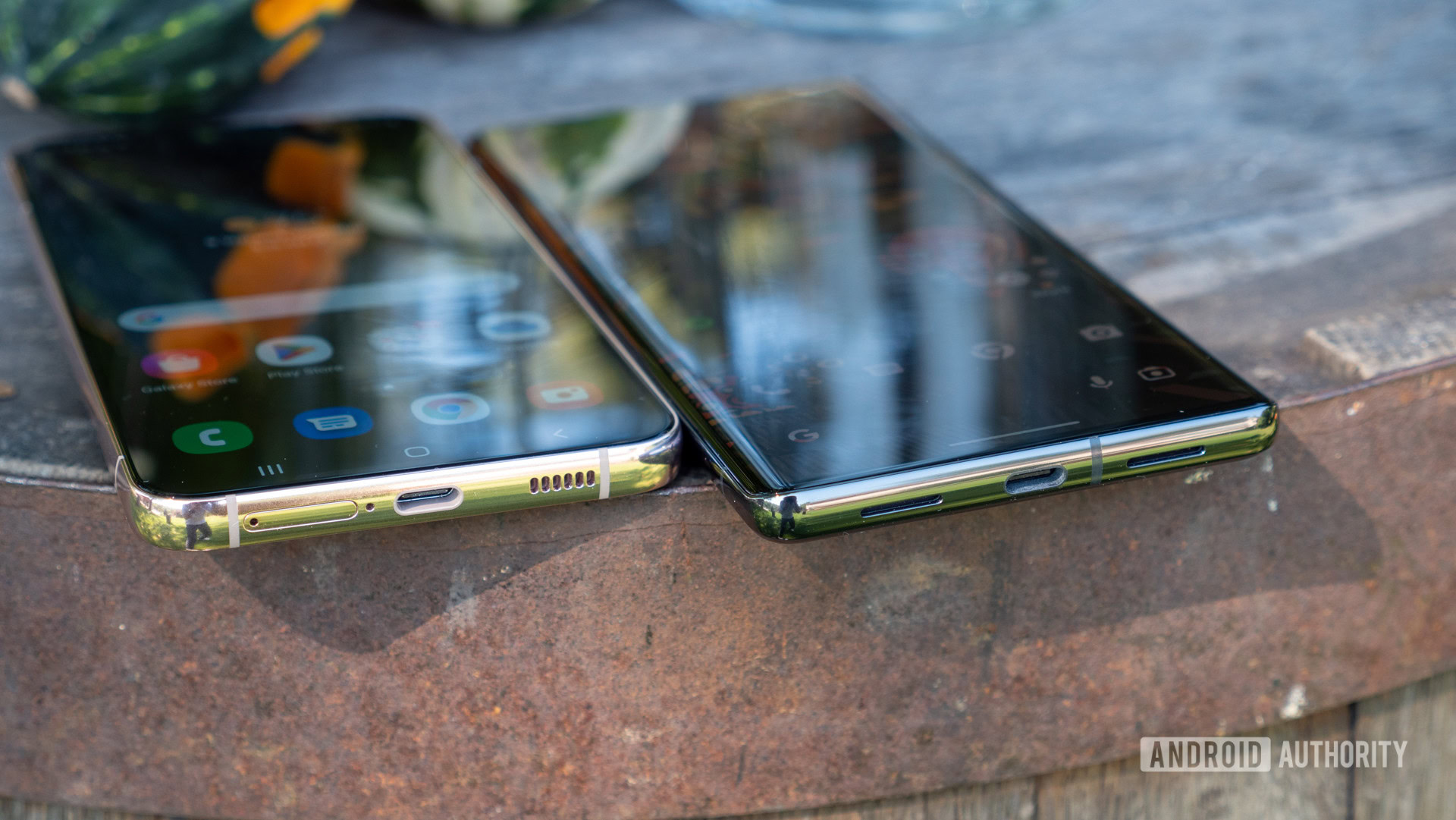
The Galaxy S22 Plus features a smaller battery than its predecessor, but the difference may not be as apparent as you’d think. Efficiency improvements in the SoC department could translate to similar full-to-empty times. And that’s precisely what we observed in our Galaxy S22 Plus review, where it delivered an impressive seven-hour screen-on-time result.
When you need to fill up those batteries, however, the Galaxy S22 Plus pulls ahead. With Samsung’s 45W Super Fast Charging, a full charge takes exactly one hour. Meanwhile, Google doesn’t seem to be in a hurry to push the envelope, as it recommends a 30W adapter. And if the Pixel 7 Pro mimics the real-world 23W charging power of the Pixel 6, it could take nearly two hours to charge up fully. Both smartphones are capable of wireless and reverse wireless charging.
Google Pixel 7 Pro vs Samsung Galaxy S22 Plus: Cameras
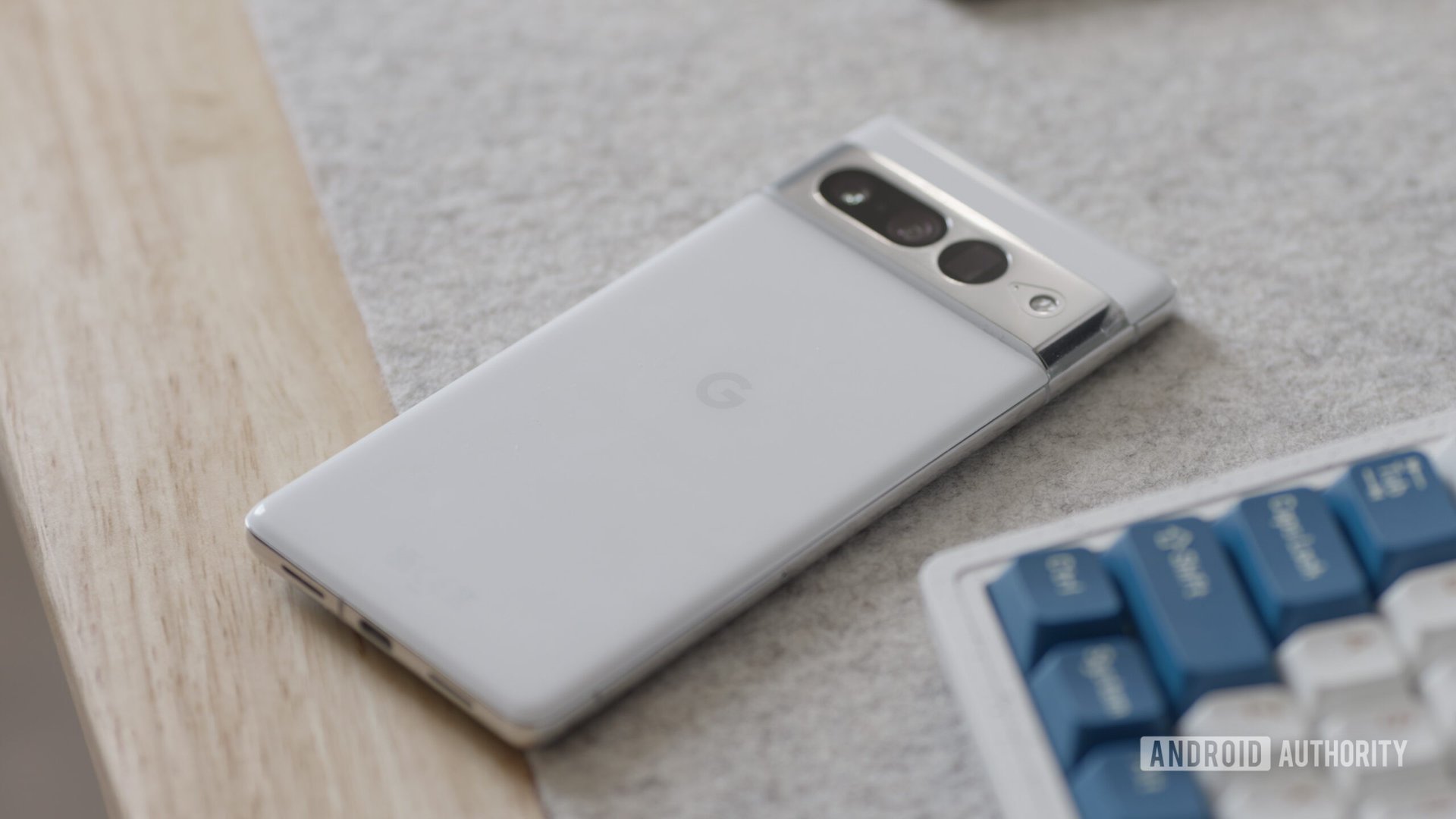
On the imaging front, you get capable 50MP primary shooters on both, the Galaxy S22 Plus and Pixel 7 Pro. The primary cameras have plenty of resolution to capture fine details, even if that 50MP figure doesn’t sound impressive against the larger 108 or 200MP smartphone cameras we’ve seen recently. Moreover, the Pixel 7 Pro holds onto the same Samsung GN1 sensor that produced excellent results last year.
You’ll also find a 12MP ultrawide lens on the back of both smartphones, but that’s where the similarities end. On the Galaxy S22 Plus, you get a third lens in the form of a 10MP telephoto camera with 3x optical zoom. Meanwhile, the Pixel 7 Pro tries to one-up its predecessor and the competition with a 48MP telephoto lens capable of 5x zoom. Thanks to a new autofocus system, you can also use the ultrawide lens on the Pixel for macro photography.
The Galaxy S22 Plus and Pixel 7 Pro boast similar cameras on paper, but only one offers a flourish of features.
Specs aside, though, you’d be hard-pressed to find fault with the performance of either device’s camera setup. Which smartphone’s images you prefer could very well boil down to the image processing and software features. The Pixel 7 Pro has a lead here, thanks to Google’s signature post-processing and features like Face Unblur, Real Tone, and upgraded Night Sight. The same applies to video recording, although you’ll have to get the Galaxy S22 Plus if you care about 8K video recording.
Google Pixel 7 Pro vs Samsung Galaxy S22 Plus: Pricing and colors
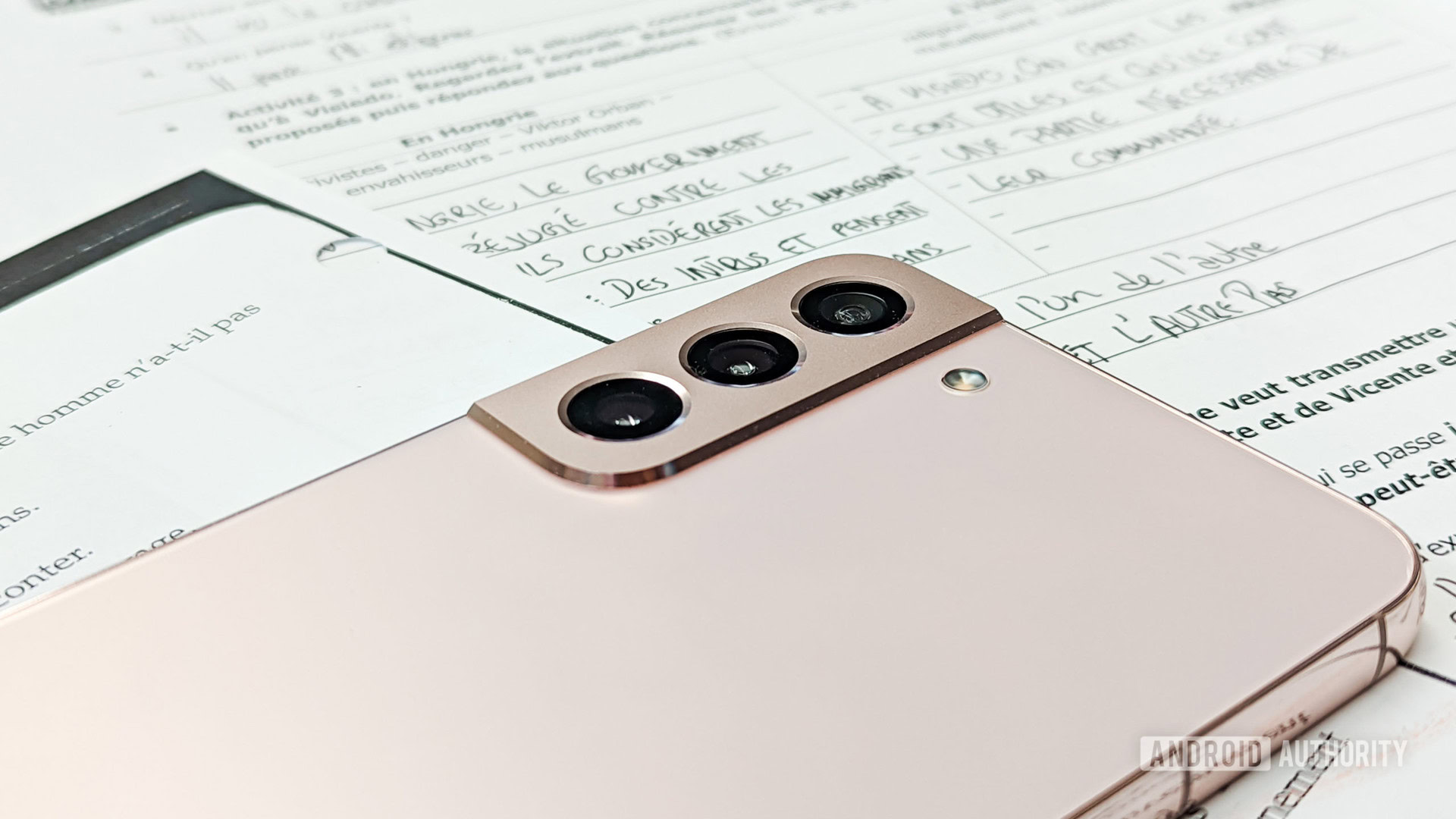
Google Pixel 7 Pro (12/128GB): $899
Google Pixel 7 Pro (12/256GB): $999
Samsung Galaxy S22 Plus (8/128GB): $999
Samsung Galaxy S22 Plus (8/256GB): $1,049
Google and Samsung didn’t rock the boat with pricing in this generation, so the value proposition remains largely unchanged from last year. The Pixel 7 Pro starts at $899, while the Galaxy S22 Plus launched at $999. However, you might be able to find the latter at a lower price now that its successor is available.
If you need more storage, you’ll need to pay an extra $100 for the 256GB variant of the Pixel 7 Pro. However, the same upgrade costs just $50 if you go down the Samsung route. While you do get 12GB of RAM on the Pixel 7 Pro vs the Galaxy S22 Plus’ 8GB, most users won’t notice the difference.
In terms of color options, Google opted for a more subdued color palette this year compared to the playful colorways of the Pixel 6 series. As such, your only options are Snow, Obsidian, and Hazel. The first two — white and black — represent your staple smartphone colors. If you want something more eye-catching, Hazel brings a splash of color with a greenish-gray color and a gold metallic accent.
By contrast, Samsung has taken the kitchen sink approach with the Galaxy S22 Plus’ colorways. You can pick from Pink Gold, Phantom White, Phantom Black, and Green at most retailers. Samsung also offers four more color choices exclusively via its own online store. The exclusive colors, namely Graphite, Cream, Sky Blue, and Violet, feature a two-toned look that emphasizes the Contour Cut camera bump.




Specs
| Samsung Galaxy S22 Plus | Google Pixel 7 Pro | |
|---|---|---|
Display | Samsung Galaxy S22 Plus 6.6-inch Dynamic AMOLED Flat display FHD+ resolution (2,340 x 1,080) 120Hz adaptive refresh rate (48Hz to 120Hz) 240Hz touch sampling rate | Google Pixel 7 Pro 6.7-inch LTPO pOLED 3120 x 1440 pixels 1500 nits Up to 120 Hz refresh rate |
Processor | Samsung Galaxy S22 Plus US, India, Australia: Snapdragon 8 Gen 1 Global: Exynos 2200 | Google Pixel 7 Pro Google Tensor G2 Titan M2 security |
RAM | Samsung Galaxy S22 Plus 8GB | Google Pixel 7 Pro 12GB LPDDR5 |
Storage | Samsung Galaxy S22 Plus 128 or 256GB No microSD card support | Google Pixel 7 Pro 128GB or 256GB UFS 3.1 |
Power | Samsung Galaxy S22 Plus 3,700mAh battery 45W wired charging 15W wireless charging Reverse wireless charging No charger in box | Google Pixel 7 Pro 5,000mAh (typical) 23W wired charging USB-PD 3.0 (PPS) 21W wireless charging (w/ Pixel Stand) Battery share No charger in box |
Cameras | Samsung Galaxy S22 Plus REAR: - 50MP wide (1.0μm, ƒ1.8, 23mm, 85-degree FoV) - 12MP ultrawide (1.4μm, ƒ2.2, 13mm, 120-degree FoV) - 10MP telephoto (1.0μm, ƒ2.4, 69mm, 36-degree FoV, 3x optical zoom) FRONT: - 10MP wide (ƒ2.2, 26mm, 80-degree FoV) | Google Pixel 7 Pro Rear: - 50 MP main sensor (f/1.85, 1/1.3", OIS, 82 FoV) - 12 MP ultrawide (f/2.2, 1/2.9", auto-focus, 125 FoV) - 48 MP telephoto lens (f/3.5, 1/2.55", 4.8x optical zoom) Front: - 10.8MP wide (f/2.2, 93°, 1/3.1") |
Video | Samsung Galaxy S22 Plus REAR: - 8K at 24fps (main lens only) - 4K at 60fps (all lenses) FRONT: - 4K at 60fps | Google Pixel 7 Pro Rear: 4K at 30/60FPS 1080p at 30/60FPS Front: 4K at 30/60FPS 1080p at 30/60FPS |
Audio | Samsung Galaxy S22 Plus Stereo speakers Dolby Atmos support No 3.5mm port | Google Pixel 7 Pro Stereo speakers Triple mics No 3.5mm port |
Connectivity | Samsung Galaxy S22 Plus 5G (mmWave + Sub6) Wi-Fi 6E, Dual Band Bluetooth 5.2 NFC support | Google Pixel 7 Pro 5G (mmWave + Sub6) Wi-Fi 6E (802.11ax) Bluetooth 5.2 NFC support |
Security | Samsung Galaxy S22 Plus Ultrasonic under-display fingerprint sensor 5 years security updates | Google Pixel 7 Pro In-display fingerprint Titan M2 chip 5 years security updates |
Software | Samsung Galaxy S22 Plus Android 12 One UI 4.1 | Google Pixel 7 Pro Android 13 Pixel UI |
S Pen support | Samsung Galaxy S22 Plus No | Google Pixel 7 Pro No |
Materials | Samsung Galaxy S22 Plus Gorilla Glass Victus Plus front and back Armour Aluminum frame | Google Pixel 7 Pro Gorilla Glass Victus front Gorilla Glass Victus back Aluminum frame |
Durability | Samsung Galaxy S22 Plus IP68 certified | Google Pixel 7 Pro IP68 certified |
Dimensions and weight | Samsung Galaxy S22 Plus 157.4 x 75.8 x 7.6mm 196g | Google Pixel 7 Pro 162.9 x 76.55 x 8.9mm 212g |
Colors | Samsung Galaxy S22 Plus Phantom Black, Phantom White, Green, Pink Gold Online exclusives: Cream, Graphite, Sky Blue, Violet | Google Pixel 7 Pro Snow, Obsidian, Hazel |
Google Pixel 7 Pro vs Samsung Galaxy S22 Plus: Which should you buy?

With the specifications and numbers out of the way, it’s time to crown a winner. Picking a favorite in the Google Pixel 7 Pro vs Samsung Galaxy S22 Plus battle is no easy task. Both are incredibly well-rounded smartphones and represent the best of what the smartphone industry has to offer. Ultimately, picking one over the other will require you to understand what you need from your next smartphone.
The Pixel 7 Pro delivers the consistent and reliable camera experience we’ve come to expect from Google smartphones. If you want top-notch image processing and color handling, the Pixel 7 Pro is your best bet. Thanks to the Tensor G2 chip’s machine learning strengths also includes unique software features like call screening, Now Playing, live translate, and real-time dictation. Thanks to the upgraded telephoto lens and above-average battery capacity, Google takes home a few hardware wins, too.
Meanwhile, the Galaxy S22 Plus packs a brighter display, faster charging, a smaller and lighter build, and more color variety than the competition. While Samsung’s One UI software skin isn’t as playful or novel as Google’s Material You design language, it still offers a cohesive and smooth experience. Going with a Samsung flagship also nets you an additional year of software updates compared to the Pixel 7 series. That may be an important value consideration if you care about using the same smartphone for years to come.
It’s also worth noting that while the Pixel 7 Pro was cheaper at launch — at least on paper — you can likely find Samsung’s 2022 flagship for much less now that the Galaxy S24 series is available. Of course, a fairer battle in 2024 would be between the Pixel 7 Pro vs the Galaxy S23 Ultra.
Let us know which device won the Galaxy S22 Plus vs Pixel 7 Pro showdown below.